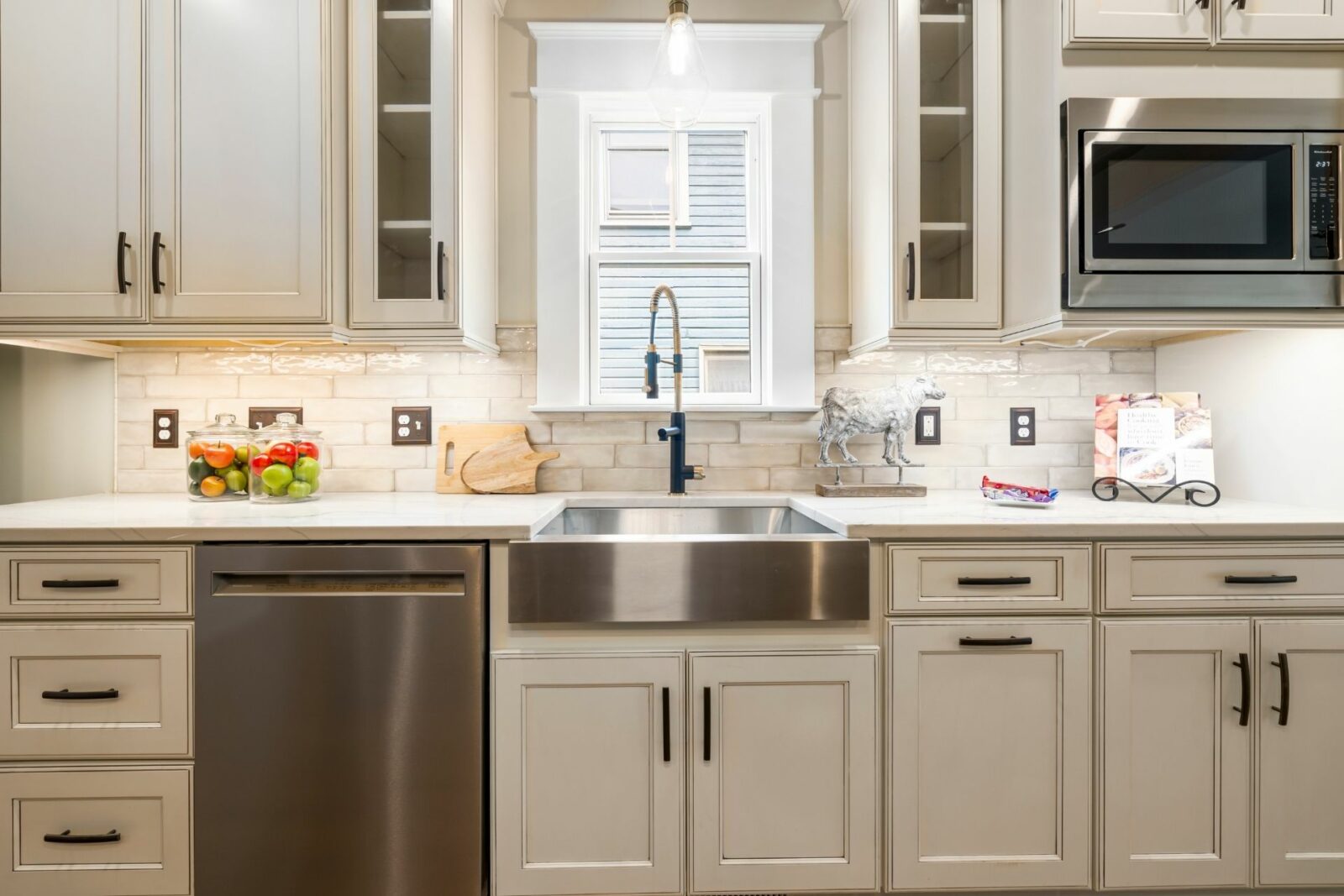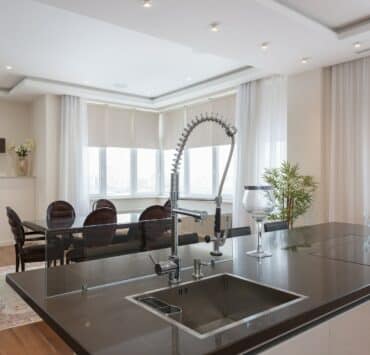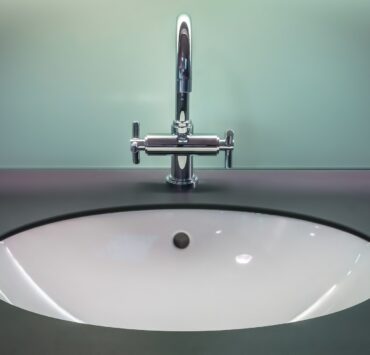Removing kitchen cabinets may seem like a difficult task if you have never done it before. However, with the right tools, it’s a DIY task that most homeowners can tackle on their own. In this article, we will walk you through the steps of how to remove kitchen cabinets safely and efficiently.
[ez-toc]Step 1: Gather Your Tools and Supplies
Before you get started, you will need to gather the necessary tools and supplies. Here is a list of what you will need.
- Screwdriver: You will need a screwdriver to remove the screws that hold the cabinets in place. A standard screwdriver should work, but you may want to use a power drill with a screwdriver bit for added speed and efficiency.
- Pry bar: A pry bar will be useful for gently prying the cabinets away from the wall and any other fixtures they may be attached to. This tool will do the cabinet removal work for you with ease.
- Hammer: You may need to use a hammer to gently tap the pry bar if the cabinets are particularly stubborn.
- Protective eyewear: We recommend wearing protective eyewear when working with power tools or any other tools that may produce flyaway debris.
- Protective gloves: Along with protective eyewear, wearing gloves will protect your hands from splinters and other sharp objects.
Step 2: Prepare the Area
Before you start removing the cabinets, prepare and protect your kitchen. Move away all appliances and other objects. This will give you a clear workspace.
You can opt to also cover your kitchen floor with a drop cloth or old towels to protect it from debris. This will make cleanup easier as well.
Step 3: Remove the Doors and Drawers
Once you have prepared the kitchen, you can now get to work on your kitchen cabinets. Start by removing the doors and drawers from the cabinets. This will make it easier to work with the cabinets and reduce the risk of damaging them.
To remove the doors, you will need to locate the hinges and remove the screws that hold them in place. Unscrew the screws. The doors should come off easily.
To remove the drawers, you will need to locate the slides and remove the screws that hold them in place. Once the screws are removed, you should be able to easily pull the drawers out of the cabinets.
Step 4: Disconnect Any Plumbing or Electrical Fixtures
If your cabinets are connected to any plumbing or electrical fixtures, you will need to disconnect them before you can remove the cabinets. This includes things like water lines and electrical outlets.
If you are not comfortable working with plumbing or electrical fixtures, it is best to hire a contractor to handle this step.
Step 5: Remove the Cabinets from the Wall
Once the doors, drawers, and any plumbing or electrical fixtures have been removed, you are ready to start removing the cabinets from the wall. This can be done in one of two ways:
- Method 1: If your cabinets are not attached to any other fixtures (such as a countertop), you can simply remove the screws that hold them in place and gently lift them off the wall.
- Method 2: If your cabinets are attached to a countertop or other fixtures, you will need to remove the screws that hold them in place and gently pry them away from the wall using a pry bar. Be careful not to damage the wall or any other fixtures as you do this.
Step 7: Dispose of the Cabinets
Dispose or repurpose your cabinets as you see fit. Follow your local guidelines for disposal. If the cabinets are still in good condition, you can repurpose, donate, or sell them.
When Should You Remove Kitchen Cabinets
There are several reasons why you might need or want to remove kitchen cabinets such as:
You’re Doing a Home Remodel
If you are planning a home remodel project, you may need to remove your kitchen cabinets to make way for new cabinets or to create a new layout for your kitchen. This might involve changing the location of the cabinets, the size of the cabinets, or the type of cabinets you use.
Your Cabinets Are Damaged
If your kitchen cabinets are damaged or in disrepair, you may need to remove them and replace them with new cabinets. This might be due to water damage, termite damage, or simply wear and tear over time.
You Want To Change The Style
If you are looking to update the style of your kitchen, you may need to remove your existing cabinets and install new cabinets that fit with your desired design. This might involve changing the color, material, or overall aesthetic of the cabinets.
You’re Remodeling Your Kitchen
If you are planning to remodel your kitchen, you may need to remove the existing cabinets as part of the process. This might involve tearing out the old cabinets and starting from scratch, or simply updating certain elements of the cabinets such as the doors or hardware.
Removing kitchen cabinets is a highly doable DIY task. The key is to have the right tools on hand and knowing which areas to tackle to make removal easy. By following the steps outlined above, you can successfully remove your kitchen cabinets and create the space you need for your home renovation project.
Related posts:
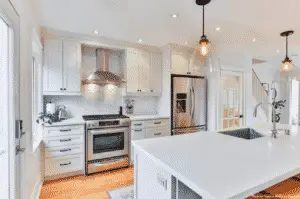 Your Guide to the Best DIY Budget Kitchen Remodel Ideas
Your Guide to the Best DIY Budget Kitchen Remodel Ideas
 How Tall is a Kitchen Island? And Many More Frequently Asked Questions around Islands Answered by Experts
How Tall is a Kitchen Island? And Many More Frequently Asked Questions around Islands Answered by Experts
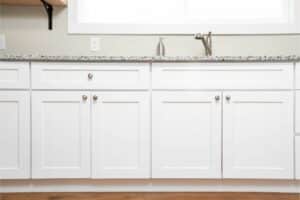 The Timeless Beauty of White Oak Kitchen Cabinets
The Timeless Beauty of White Oak Kitchen Cabinets
 European Kitchen Cabinets: A Comprehensive Guide for Homeowners
European Kitchen Cabinets: A Comprehensive Guide for Homeowners
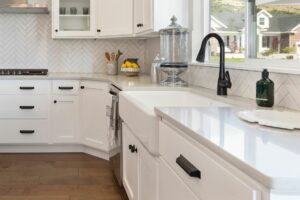 How to Install Moen Kitchen Faucet: A Step-by-Step Guide
How to Install Moen Kitchen Faucet: A Step-by-Step Guide
